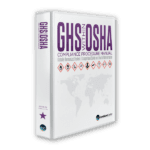This post was originally published in February 2016 and has been updated in November 2020 for accuracy.

One of the most common tests for determining hazard classification is the flashpoint. This humble piece of physical information is defined in various ways in various regulations, but generally is the lowest temperature at which the vapors from a flammable liquid will ignite near the surface of the liquid or in a test vessel. This can be critical for safety because this temperature will be the lowest possible for the liquid to cause a flash fire if released or spilled. The fire risk will be much smaller if the material can be handled and transported at temperatures lower than the flashpoint.
The flashpoint has become the standard test for classifying flammable liquids. It’s used by the U.S. OSHA (Occupational Health and Safety Act) and HMR (Hazardous Materials Regulations) classification systems, as well as Canada’s WHMIS (Workplace Hazardous Materials Information System) and TDG (Transportation of Dangerous Goods Regulations).
Obtaining a flashpoint on a new product is usually easy enough. Many laboratories, particularly those that deal with petrochemicals, can perform the test for a reasonable charge. If your company has too many products to make outsourcing practicable, a flashpoint tester itself is comparatively low cost (as scientific apparatus goes), and a trained person can obtain data quickly and efficiently. However, both of these options do cost money. Wouldn’t it be nice if there were a way to avoid the expense?
For example, toxic materials are usually classified by a test called the LD50 (the lethal dose to 50% of test subjects). This is a more expensive, complicated test, but there’s one beautiful feature for mixtures. You don’t have to do the test if you can calculate it. This calculation basically prorates the LD50s of the ingredients based on their concentrations. While there is debate about how accurate this system is, it’s directly mentioned in the above regulations as an option if testing of the actual product has not been done.
Unfortunately, the same regulations do not directly provide us with a method for calculating a flashpoint. But OSHA and WHMIS are based on the Globally Harmonized System of Classification and Labelling, and TDG and the HMR are based on the UN Recommendations on the Transport of Dangerous Goods. Both of these documents include a reference to calculating flashpoints if directly measured ones are not available.
That’s the good news. The bad news starts when we discover that both the Globally Harmonized System and the UN Recommendations don’t give the specific formula for the calculation. The GHS reference can be found in sub-section 2.6.4.2.2, while the UN Recommendations on the Transport of Dangerous Goods, Manual of Tests and Criteria places the reference to a calculation in Appendix 6, paragraph 4. At least both of them refer to the same method, one reported by Gmehling and Rasmussen in the journal Industrial & Engineering Chemistry Fundamentals 21, 86, (1982) titled “Flashpoints of flammable liquid mixtures using UNIFAC.”
When we look up this article, we encounter another roadblock – like many scientific journals, this one is not free, and the article is behind a paywall. We have a choice; either pay up to read the full article or see if the formula appears somewhere else.
Oh, and it helps if we know what UNIFAC is. Apparently, the acronym stands for “UNIQUAC Functional-group Activity Coefficients” (making it an acronym containing an acronym) and is “a semi-empirical system for the prediction of non-electrolyte activity in non-ideal mixtures.”
A little more digging on the internet comes up with an article summarizing how to calculate various flammability measurements, published by M. Hristova and S. Tchaoushev in the Journal of the University of Chemical Technology and Metallurgy, 41, 3, 2006, 291-296, titled “Calculation of Flash Points and Flammability Limits of Substances and Mixtures.” This can be accessed, with no paywall, here.
So, we finally have our method to calculate our flashpoints. Except it’s nothing like the relatively simple method for calculating LD50s. Hristova and Tschaoushev tell us the calculation will take four steps:
- Determine the flashpoint which satisfies an equation relating “the actual partial pressure of component i in a vapor-air mixture” with “the partial pressure in a gas-air mixture with a composition corresponding to the LFL (lower flammable limit) of pure component i.”
- Determine the flammability limits at the temperature under study using the Zebatekis equation. (This equation is helpfully included.)
- Determine the partial pressure of each component using the Antoine equation, and
- Determine the activity coefficients using the UNIFAC method.
Easy, right?
At this point, it becomes obvious that these calculations are currently of use, perhaps, to physical chemists but are not yet a workable solution for companies simply trying to determine if their product is in Packing Group II or III. It turns out that the molecular forces in flammable liquids are far too complex to reduce to a simple equation such as can be used for toxic mixtures. Even computer systems that model these mixtures must be taken as provisional and certainly not nearly as reliable as measured data.
So, the day when we can toss aside our flash point testers and classify flammable liquids based only on the composition is yet to come. A measured flashpoint is still the simplest and most accurate solution to comply with the classification rules for workplace safety or transportation.
Do you have any questions about classifying hazardous materials? Contact ICC Compliance Center at 888-442-9628 (U.S.) or 888-977-4834 (Canada), and ask for one of our regulatory experts.
Stay up to date and sign up for our newsletter!
We have all the products, services and training you need to ensure your staff is properly trained and informed.
 Canadian TDG Publications |
 GHS Publications |





